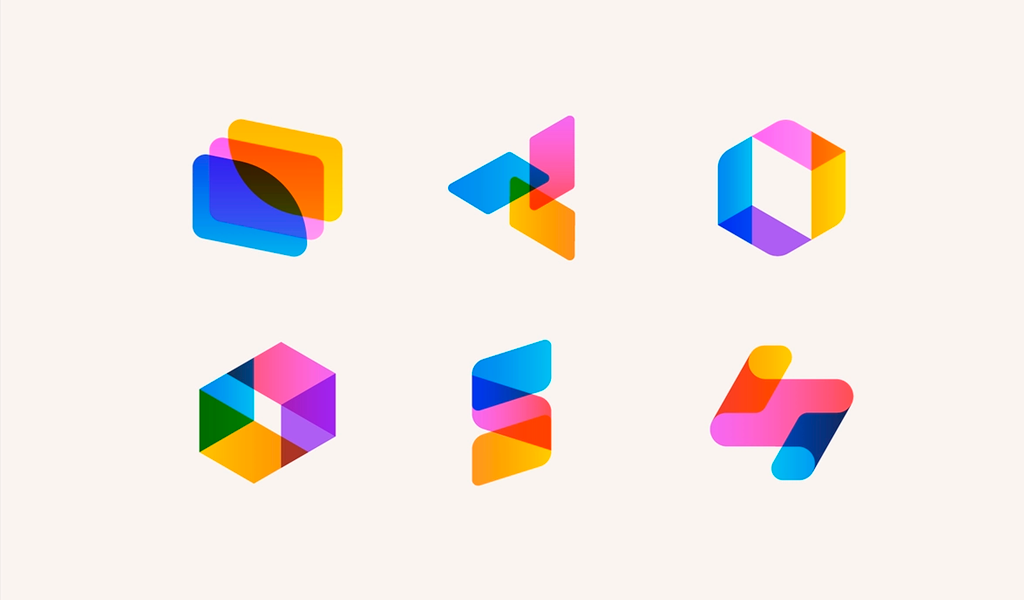Shapes of logos: what they mean, how to choose
Scientists have found that the shape of a logo alone is enough to influence the perception of a brand. Geometry can tell customers about the values, the product, the benefits of the company. We offer you to figure out how to work with logo design in order to attract customers: in the article we will analyze the psychology of different forms and tell you which one is better to choose for your logo.
What is a logo
First of all, the logo is an integral and probably the most important part of the corporate identity.
Briefly characterizing the concept of a logo, then this is a kind of font style or sign denoting a specific company (organization, circle of young craftsmen, sect).
Purpose of the logo
- Do you want to stand out from the crowd of competitors? Do you want to be remembered by the client? Solving these problems is the main purpose of the logo;
- The logo on the product is a sign of quality. Many people who see the Nokia logo on a cell phone involuntarily associate it with quality and reliability;
- A well-executed logo increases the attractiveness of the product for the buyer;
- The logo will help create a solid image of the company. Logos can sometimes work wonders. They can elevate the company above the competition or lower it below the plinth.
What are the shapes of the logo
A circle
This form is used in about 20% of popular logos, symbolizing goodwill, gentleness, unity, and stability. This is confirmed by the results of a study by the INSEAD business school. Participants in the experiment were shown advertisements for sports shoes and a sofa with a round, angular logo and no emblem. People perceived products with a round identity as convenient, and with an angular one as durable.
The circle is so versatile that it has become a symbol of a wide variety of companies, including non-profit organizations, retailers, restaurants, financial institutions and many others.
Triangle
Triangular structures are considered the most stable and safe: this shape is often associated with strength, energy, inspiration, transformation, dynamics. But due to variations in the combination of angles and the position of the figure in space, this form can be perceived differently. For example, angles pointing up or to the right symbolize forward movement, and downward or left – passivity.
Most often, triangles are used by innovative, bold, energetic companies focused on a male or youth audience (construction, automotive, legal, scientific industries).
Square and Rectangle
These figures are usually perceived as a symbol of order, confidence and stability. The reason is that the four-sided shapes with straight lines and angles are reminiscent of structures related to protection and security: houses, safes, bricks, fences.
This design is suitable for brands that especially need to appear serious and professional, such as banks, insurance companies or law firms.
Vertical and horizontal lines
Lines, like rectangles, convey the idea of reliability and professionalism. Additionally, they can symbolize movement and dynamics. But, depending on the direction, these elements convey the brand’s personality in different ways. In addition, the shape that the lines form (for example, a circle, a square or an abstraction) is important.
- Vertical stripes are associated with strength and sophistication, as in the SoundCloud logo, where the soundtrack is made up of lines. This decision gives the emblem dynamics and looks harmonious for a music service;
- Horizontal lines create a sense of calm and protection. For example, the logo of the world’s largest telecommunications company AT&T of blue stripes means the interconnectedness of communications that have entangled the entire globe. The circle adds unity to the emblem.
How to choose a logo shape
Before designing a logo, make a list of the values and messages it should convey. Think about the mission. Once you understand what kind of message you need to encapsulate in the logo, it will become easier for you to choose not only the shape, but also the color and font.
Use these three ingredients wisely. If you have chosen a strong shape but find it too “masculine”, just add colors that will tone down this aspect.
Gestalt theory
If you want to deepen your approach to design and use psychology even more, study the work of German psychologists in the 1920s. They believed that the human brain combines visual elements into a whole that carries a much greater meaning. People form patterns from objects of a simple form, and the rest of the figures focus on themselves.
Another gestalt principle is often used in logo design. The object may be incomplete, but if there are enough details in it, then the human eye perceives the whole picture. Remember the WWF and their panda logo.
The logo shape you create becomes part of the message to your customers. Learn psychological principles and you will be able to create powerful brands.
So, we told you about the shapes of the logo and their impact on perception. We hope the information provided will be useful to you. Good luck!


